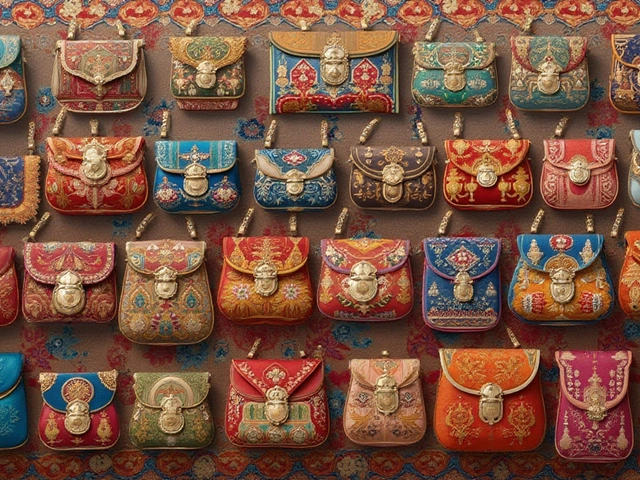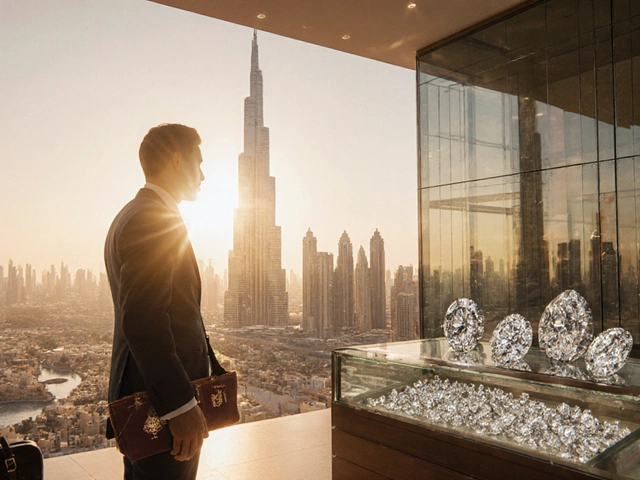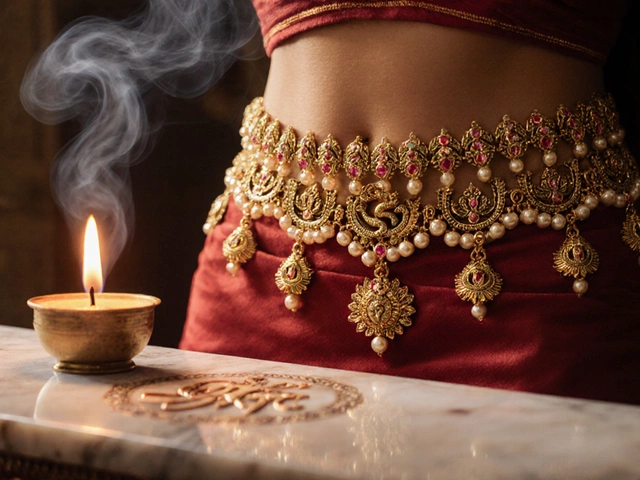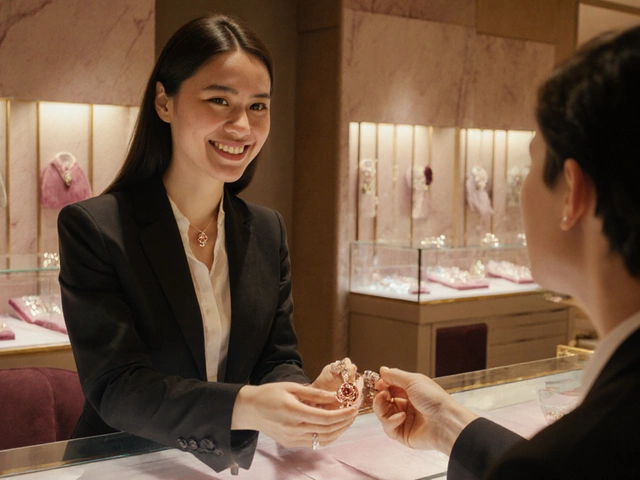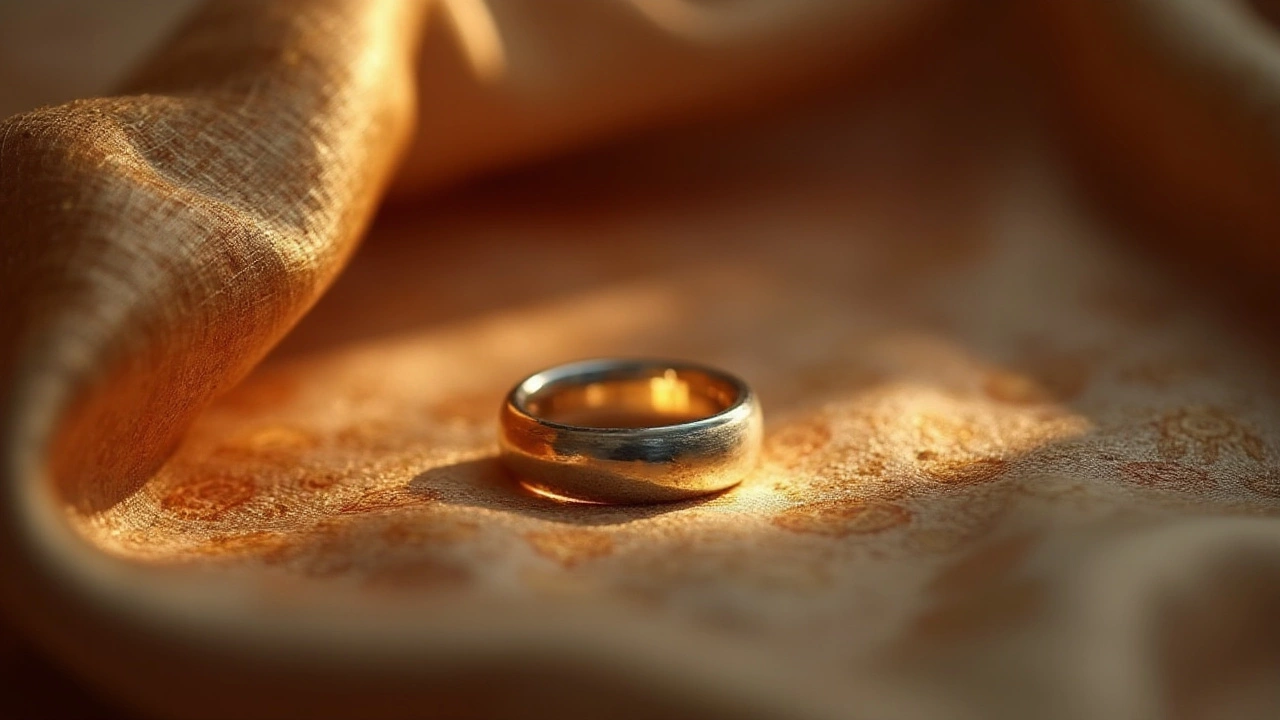
There's a certain allure that comes with wearing platinum jewelry. Known for its elegance and resilience, a platinum ring signifies not just beauty but a promise to withstand the passage of time. Yet, some owners may notice a curious change: a yellowish tint on what was once a brilliant white band.
This change can be unsettling, especially when you've invested in a piece meant to last generations. But fear not; this phenomenon is not uncommon and understanding its causes is the first step towards remedy. Whether it's due to years of wear, reactions to chemicals, or even unique environmental factors, there are explanations and solutions at hand.
In the journey to uncover the mystery behind this yellowing, we'll delve into what makes platinum unique, explore common causes of discoloration, and offer tangible advice on restoring and preserving your ring's natural gleam. Let's embark on uncovering the life of your cherished platinum ring, armed with the knowledge to keep it shining bright.
- Understanding Platinum and Its Properties
- Causes of Platinum Ring Discoloration
- Environmental Factors Affecting Platinum
- Maintenance and Care Tips for Platinum Rings
- Restoring the Shine to Your Platinum Jewelry
Understanding Platinum and Its Properties
For centuries, platinum has been cherished for its lustrous shine and unparalleled durability. As one of the rarest of the precious metals, platinum stands out due to its density and resistance to tarnish, making it an ideal choice for jewelry like rings. However, what sets platinum apart isn't just its physical attributes; it's the very essence of its enduring nature. Unlike gold, which is often alloyed to strengthen it, platinum remains largely pure in jewelry form, usually around 95% pure. This purity contributes to its natural white sheen, an aspect that appeals to those seeking elegance paired with resilience.
Platinum's unique properties extend beyond just its appearance. Known for its hypoallergenic qualities, it is often chosen by those with sensitive skin. The material's ability to withstand extreme temperatures without losing its structural integrity adds to its allure, especially in delicate settings where other metals might fail. Platinum ring enthusiasts appreciate how the metal naturally develops a patina, a soft sheen that gives the jewelry a rustic yet sophisticated character over time. Yet, it's this very evolution that sometimes leads the ring to appear yellowed or dulled, a point we will further explore.
Another distinctive aspect of platinum lies in its weight. Feeling significantly heavier than gold, the heft of a platinum ring is often considered by many to be a touch of luxury—a tactile reminder of its presence. Its weightiness is not just a testament to the metal's density but also its robustness. Platinum's chemical inertness, meaning its lack of reactivity with other elements, largely keeps it from corroding. This makes it a steadfast companion for any gemstone it cradles, increasing the longevity of the entire piece.
A little-known fact, platinum has been used industrially before it gained popularity in the jewelry world. The early 20th century saw it primarily used in automotive catalytic converters due to its effectiveness in converting emissions. This historic industrial use underscores its strength and stability. As noted by the Platinum Guild International, "Platinum's purity assures a lifetime of wear."
This quote from the Platinum Guild International reminds us of the metal's resilience and beauty.From its purity to its rarity, every aspect of platinum speaks to permanence and allure—a fitting symbol of cherished memories and timeless elegance.
Platinum's journey from industrial competence to jewelry excellence illustrates its adaptability and unmatched quality. When maintained correctly, a platinum ring can indeed last several lifetimes, preserving its beauty through the ages. As we delve into the intricate relationship between platinum and the environment, it becomes clearer how owners can ensure their prized possessions retain their brilliance. Remember, while a platinum ring may seem immutable, understanding its nature is key to appreciating its ongoing evolution on your hand and how to keep it gleaming bright.
Causes of Platinum Ring Discoloration
While platinum is celebrated for its remarkable durability and lustrous shine, it is not completely immune to changes in appearance. Platinum ring owners might occasionally notice a subtle shift in color, sometimes interpreting this as a yellowish hue. At the heart of this transformation lies a handful of interesting scientific phenomena. First, it's essential to understand that platinum itself retains its color. However, the alloyed metals mixed with platinum to enhance its workability might contribute to an altered color when exposed to certain environments or chemicals. For example, some platinum jewelry might include traces of metals like gold or nickel, which can oxidize, leading to a slightly yellowish tinge on the surface. This oxidation process is not rapid, but over time, contributes to what may be perceived as discoloration.
Another contributing factor could be the scratches resulting from everyday wear, which create micro-abrasions on the surface of the platinum ring. Unlike gold, where scratches result in loss of metal, platinum merely shifts from one place to another. These micro-scratches can scatter light differently, potentially giving the ring a less brilliant appearance and, in some cases, causing a yellowish hint due to the scattering of light. Additionally, dirt and skin oils accumulating in these fine lines can alter the shine and hint at discoloration. Keeping your ring maintenance routine might combat these superficial changes.
Environmental factors also play a significant role. Everyday elements we often overlook can affect the sheen of our platinum pieces. Chlorinated water, frequent exposure to cosmetic products like lotions and perfumes, or even interactions with household cleaning chemicals can contribute to a change in appearance. A renowned jeweler once observed, "Our jewelry often shares our experiences. Be it chlorinated pools or the perfumes we love, platinum absorbs a bit of our living stories." This doesn't necessarily damage the platinum but can alter its aesthetic over time. A regular rinse with warm water and mild soap can go a long way in preserving the brilliant sheen you adore.
Finally, the combination of platinum with other metals in crafting jewelry introduces variables in how the piece ages. While platinum itself is fade-resistant, the alloys that accompany it might not exhibit the same stability under varying conditions. Understanding the composition of your ring might shed light on its appearance over time. Jewelers, cognizant of this, often recommend periodic professional cleaning sessions which can effectively restore the piece's initial luster and address any superficial tarnishing.
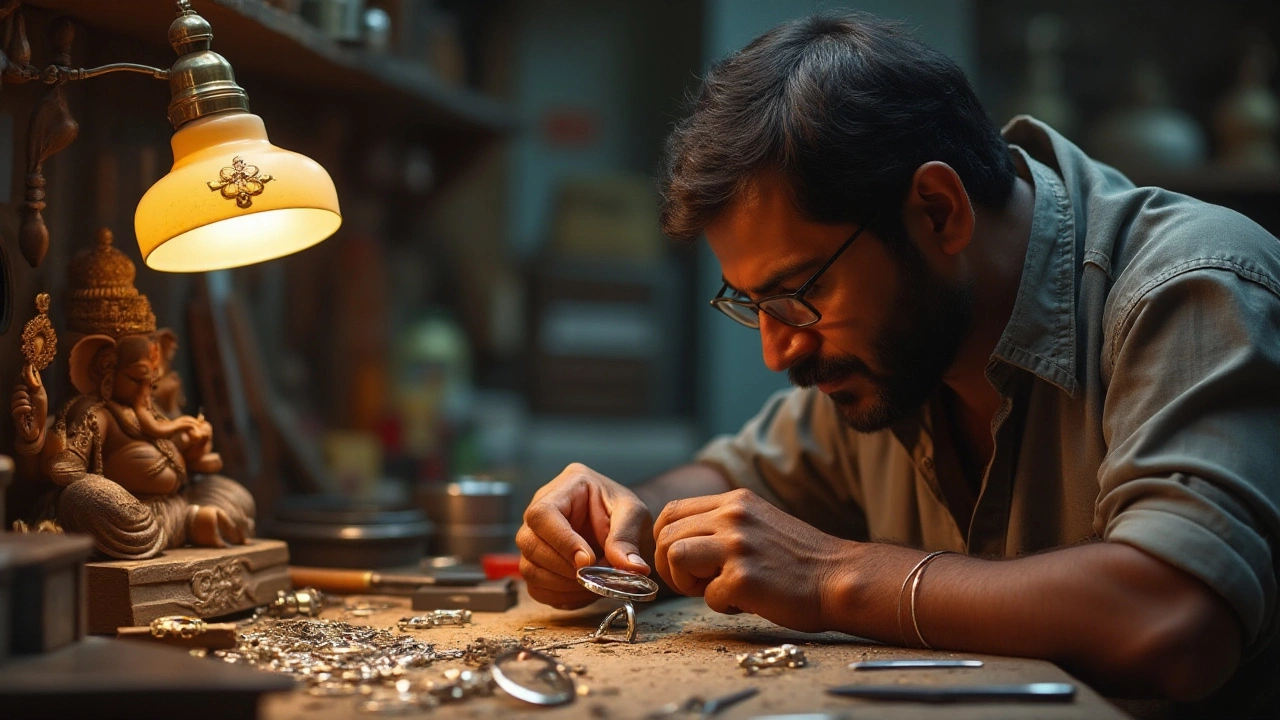
Environmental Factors Affecting Platinum
When it comes to safeguarding your precious jewelry, understanding the role of environmental influences can make all the difference. At first glance, you might think that a metal as robust as platinum would remain impervious to such factors, yet even this noble metal isn't entirely immune. One of the key elements affecting the color of your platinum ring is its exposure to various everyday substances and conditions.
It's quite fascinating how something as simple as the air we breathe could have an impact. The oxygen and sulfur in the air can interact with the surface of platinum, leading to subtle changes over time. This reaction isn’t something that happens overnight, but rather, it manifests slowly with a consistent environment. Regular exposure to high humidity environments or polluted areas can accelerate this natural process. In cities with high levels of industrial pollution, for instance, there might be an uptick in jewelry discoloration due to higher sulfur content in the air.
But it doesn’t stop at the air we breathe. Consider the various household products and cosmetics we use daily. Lotions, perfumes, and even hair sprays contain chemicals that can react with metals. Certain compounds, particularly those that contain chlorine, can cause surface modifications to platinum. It’s worth noting that while the effects of these products may initially be negligible, the cumulative exposure over weeks and months can contribute significantly to the unwanted tint.
Water, too, plays a pivotal role. Although rare, repeated contact with hard water, which contains a higher concentration of minerals such as calcium and magnesium, can leave micro-deposits on the surface of the platinum ring, affecting its sheen.
Maintenance and Care Tips for Platinum Rings
Caring for your platinum ring is not just about preserving its beauty but ensuring it remains a true reflection of your commitment and taste. Platinum, while being exceptionally durable, is still susceptible to certain elements which might not harm its structure but can dull its shine. Knowing how to care for your ring properly can help maintain its brilliance for years to come, akin to a piece of art that requires attentive preservation.
One will notice that platinum rings often develop a patina, a slightly matte finish that many find appealing. This is a natural occurrence and doesn't indicate damage; in fact, this unique finish can add character to your jewelry. However, if you prefer the original luster, gentle polishing by a professional jeweler or a soft cloth can restore it. While doing this yourself, always remember: a gentle touch goes a long way, and it keeps the metal from wearing unnecessarily.
Daily wear exposes platinum to a myriad of potential blemish-makers. Chemicals such as chlorine, often found in swimming pools and cleaning supplies, can damage your ring's surface. To prevent this, it's advisable to remove your ring before engaging in activities that involve harsh substances. Consider creating a safe place in your home where you always place your ring when it's not worn. Developing a habit of storing your ring safely can prevent unnecessary exposure to damaging materials.
An occasional professional cleaning goes a long way in preserving the beauty of platinum. Most jewelers offer cleaning services that are tailored to the unique properties of platinum. They possess the tools and expertise to remove dirt and restore the gleam without the risk of scratches. Regular maintenance twice a year can be immensely beneficial in maintaining both the appearance and structural integrity of your jewelry.
"Platinum, though comparable with gold, is truly a league of its own when it comes to durability," says Lisa Bennett, a renowned expert in the field of precious metals. "Proper care ensures it stands the test of time, retaining its timeless beauty."
Physical impacts can also contribute to altering a ring’s appearance. Be mindful of wearing your platinum ring while doing heavy work or sports that involve hard knocks. Platinum, though sturdy, can still show signs of scratching over time. The good news is these scratches do not damage the metal itself, owing to platinum's density. They can easily be polished out if desired, restoring the ring's smoothness.
Lastly, consider an annual insurance check-up for your platinum ring. Its value can fluctuate and insuring it correctly guarantees that in case of loss or damage, you are fully covered. Many insurance companies understand the unique value of platinum jewelry and offer specialized plans for its protection. Investing in such an insurance policy is wise, ensuring peace of mind against unforeseen circumstances.
These easy-to-implement steps and occasional professional attention will help in maintaining your cherished ring, keeping it as magnificent as the day it first adorned your finger. With ring maintenance, as with maintaining cherished memories, a little goes a long way.

Restoring the Shine to Your Platinum Jewelry
Every piece of jewelry carries its own story, and your platinum ring is no exception. Yet, even the most cherished pieces can lose their lustrous appeal over time. Restoring your ring to its former glory isn’t just about aesthetics; it’s about breathing life back into its historic and sentimental value. Begin this revitalizing journey by understanding that platinum, though resistant to tarnish, is not immune to developing a dull finish. This happens primarily due to small scratches that accumulate, creating a patina—a frosty appearance that some actually find appealing. However, if it’s the mirror-like shine you seek, certain steps will help reclaim that sparkle.
Firstly, consider professional polishing. Jewelers have access to specific tools and methods that can buff out the tiny abrasions and restore that satin-like finish. It's a meticulous process that usually involves sequentially using finer abrasives to bring platinum back to life without removing significant metal weight. Visiting your jeweler once every six months for a professional clean and polish can maintain the ring’s brilliance effectively. In between professional care, you can clean your platinum jewelry at home. Start with a mild jewelry cleaner; ensure it's formulated specifically for platinum to avoid unwanted chemical reactions. Soak the ring in warm soap and water for about 20 minutes before gently scrubbing with a soft toothbrush to remove dirt from crevices.
After cleaning, thoroughly rinsing under warm water and drying with a soft cloth are key steps. Remember, handling your ring with clean hands reduces oil transfer from skin, minimizing the rate at which dirt adheres to the surface.
"Platinum's resilience is one of its defining characteristics," says Sarah Harwood, a gemologist with over 20 years of experience. "While it may develop scratches, these can usually be polished away, unlike the permanent loss of material seen in gold."It’s important to store your ring properly when not in use. A cotton-lined jewelry box or a separate pouch minimizes the risk of scratches from other items. On days when you're engaging in laborious activities, consider leaving your ring safely at home. This precaution prevents further impact, ensuring that fewer trips for polishing will be required over the lifetime of your jewelry.
For those interested in DIY low-impact polishing tips, using recommended polishing cloths specifically designed for platinum can be a practical approach. These cloths are infused with micro-abrasives and precious metal polishes. They’re gentle and effective for maintaining brilliance on a day-to-day basis. Implement these home-care practices regularly without replacing professional maintenance. Jewelry discoloration can also stem from product exposure, so be mindful of lotions, perfumes, and makeup that could escalate the incidence of discoloration or deposit difficult-to-remove residues.
Ultimately, the journey to maintain the shine of your platinum ring is about finding a balance between professional assistance and regular home maintenance. By following these steps, you create a symbiotic relationship with your platinum piece, where the preservation of beauty is effortless and lasting, thus extending not just the allure but also the lifespan of your beloved jewelry.

